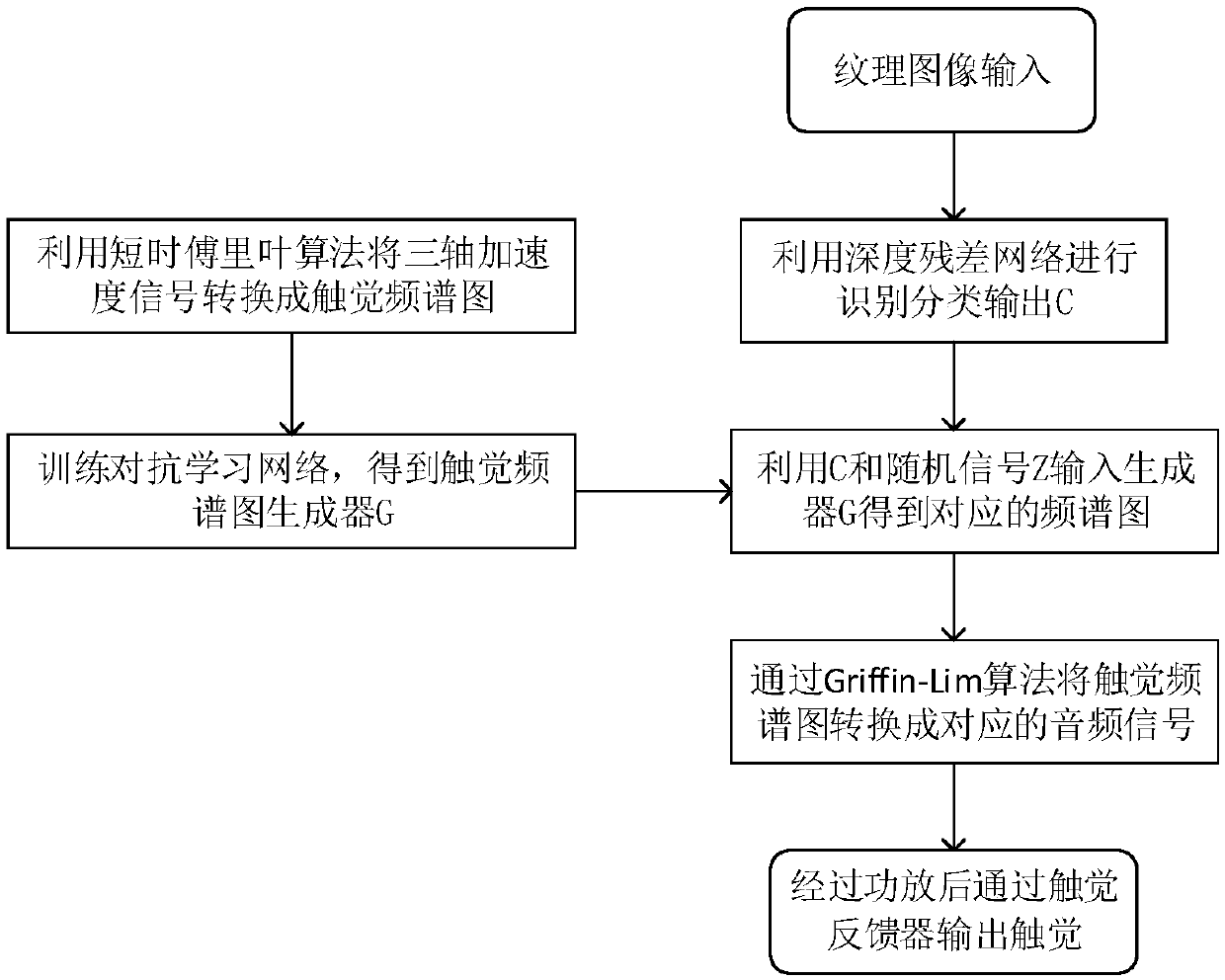Method for converting texture image into tactile signal based on deep learning
A texture image and tactile technology, applied in image analysis, image data processing, voice analysis, etc., can solve the problems of no evaluation system, stay, and no evaluation criteria for research results, etc., to achieve high similarity of real tactile sensation, high practical value, Rich effects in application scenarios
- Summary
- Abstract
- Description
- Claims
- Application Information
AI Technical Summary
Problems solved by technology
Method used
Image
Examples
Embodiment Construction
[0016] The method for converting texture images into tactile signals based on deep learning proposed by the present invention, its flow chart is as follows figure 1 shown, including the following steps:
[0017] (1) Adam optimization is performed on the deep residual network used for texture image training, and the texture image is trained by using the deep residual network optimized by Adam to obtain the label information C with texture image features;
[0018] (2) Utilize the three-axis acceleration signal of the texture image to obtain the tactile spectrogram generator, the process is as follows:
[0019] (2-1) Perform short-time Fourier transform on the three-axis acceleration signal related to the texture image to obtain the initial tactile spectrogram of the texture image, and perform logarithm and normalization processing on the tactile spectrogram to obtain the texture image The tactile spectrogram;
[0020] (2-2) Use the tactile spectrogram of the texture image abov...
PUM
 Login to View More
Login to View More Abstract
Description
Claims
Application Information
 Login to View More
Login to View More - R&D
- Intellectual Property
- Life Sciences
- Materials
- Tech Scout
- Unparalleled Data Quality
- Higher Quality Content
- 60% Fewer Hallucinations
Browse by: Latest US Patents, China's latest patents, Technical Efficacy Thesaurus, Application Domain, Technology Topic, Popular Technical Reports.
© 2025 PatSnap. All rights reserved.Legal|Privacy policy|Modern Slavery Act Transparency Statement|Sitemap|About US| Contact US: help@patsnap.com


